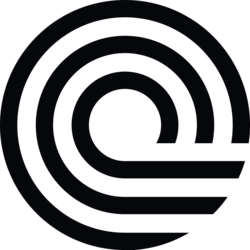Google is set to introduce floating toolbars with Material 3 Expressive, signaling a shift towards bottom controls in apps. This move reflects Google's commitment to enhancing user experience and accessibility across its platforms. The incorporation of floating toolbars marks a significant update to Material Design, aiming to streamline navigation and promote seamless interaction within apps.
The Rise of Floating Toolbars
With Material 3 Expressive, Google is leveraging floating toolbars to transform the way users engage with app controls. By relocating these tools to the bottom of the screen, Google aims to enhance usability and ergonomics. This strategic placement ensures that essential functions are easily accessible and reduces the need for constant top-screen navigation.
The shift towards floating toolbars underscores Google's dedication to optimizing user workflows and simplifying app interfaces. By centralizing key controls at the bottom of the screen, users can interact with apps more efficiently, leading to a smoother and more intuitive experience.
Enhancing User Accessibility
Google's emphasis on bottom controls with Material 3 Expressive represents a key accessibility improvement for users. Placing essential functions within easy reach at the bottom of the screen caters to a wider audience, including individuals with limited dexterity or mobility challenges. This inclusive design approach ensures that all users can navigate apps with greater ease and efficiency.
By prioritizing user accessibility through bottom controls, Google is reinforcing its commitment to creating technology that is both user-friendly and inclusive. This proactive approach to design not only benefits individuals with disabilities but also enhances the overall usability of apps for all users.
Streamlining Navigation with Material 3
Material 3 Expressive's introduction of floating toolbars marks a significant step towards streamlining app navigation. By consolidating essential controls at the bottom of the screen, users can more easily access key functions without interrupting their workflow. This optimized navigation flow promotes a more seamless and intuitive user experience.
The emphasis on streamlined navigation aligns with Google's broader goal of simplifying digital interactions and reducing friction in app usage. By reimagining toolbar placement with Material 3 Expressive, Google is paving the way for more efficient and user-centric app design.
Improving Ergonomics and Comfort
Google's adoption of floating toolbars in Material 3 Expressive is designed to enhance ergonomics and user comfort during app usage. Placing essential controls at the bottom of the screen reduces the strain on users' fingers and promotes a more natural hand position while interacting with apps. This ergonomic design choice aims to improve user comfort and reduce fatigue during extended app sessions.
By prioritizing user ergonomics and comfort through the integration of floating toolbars, Google is demonstrating its commitment to enhancing the physical usability of apps. This user-centric approach not only benefits user experience but also contributes to the overall well-being of individuals engaging with digital interfaces.
Visual Cohesion and Consistency
Material 3 Expressive's implementation of floating toolbars contributes to visual cohesion and consistency across apps. By standardizing the placement of essential controls at the bottom of the screen, Google is promoting a unified user interface design that enhances familiarity and usability. This visual consistency ensures that users can easily navigate different apps without encountering drastic interface changes.
The focus on visual cohesion and consistency reflects Google's dedication to creating a seamless and harmonious app experience for users. By aligning app design elements such as floating toolbars, Google is fostering a sense of continuity and ease of use that enhances overall user satisfaction.
If you have any questions, please don't hesitate to Contact Us
Back to Technology News















































